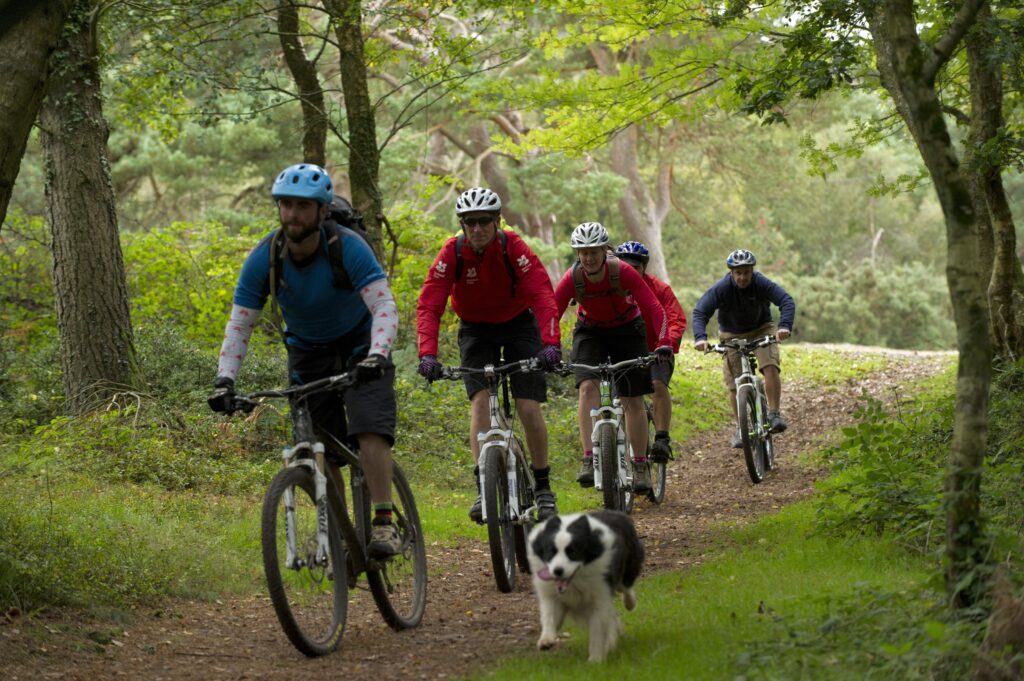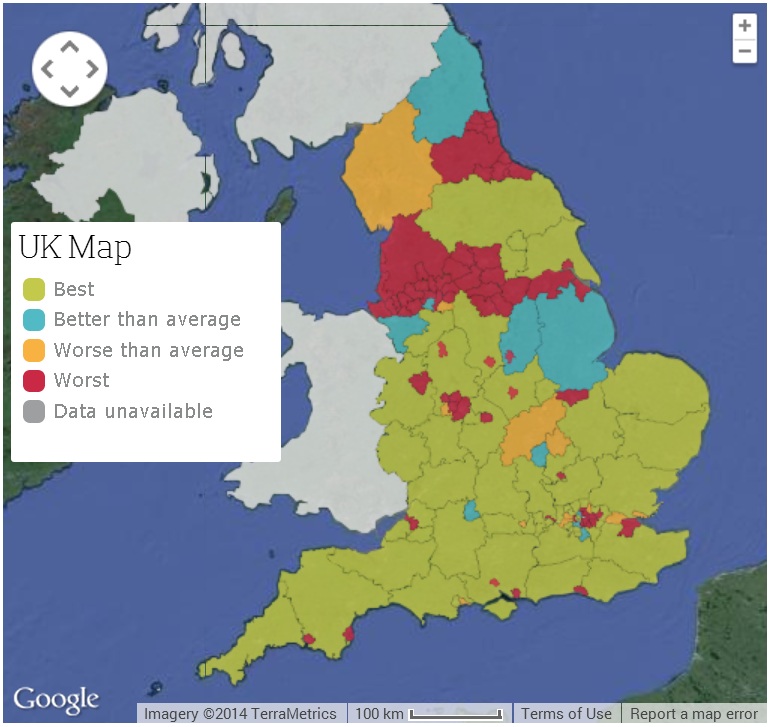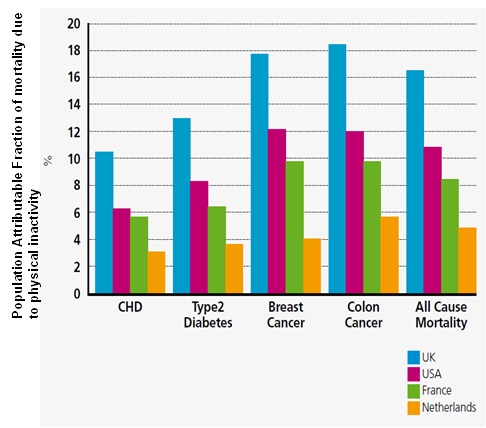We all need to be active, every day. This isn’t as daunting as it may sound. Here’s why:
First, there are virtually no rules to this game: if your idea of physical activity is gardening on your allotment or playing tag with the kids, or trying out street dance, it all counts. In fact, one in four adult Londoners gets the recommended two and a half hours of physical activity per week just through everyday travel.
Second, anyone can play: you can take up exercise at any stage in life, and still see health benefits. For example, becoming active after the age of 50 halves the risk of death after 10 years, to that of a consistently active individual: a similar reduction to that seen after smoking cessation (although exercise at all stages of life is important and the earlier you start the better, as it helps prevent the development of many long-term health conditions such as coronary heart disease).
And it doesn’t matter what shape you’re in or what shape you are: you’re better off being active. One study has found that maintaining or increasing fitness levels can help to offset some of the negative health effects of increased body fat.
Third, you’d be amazed how many people are rooting for you besides family and friends – local councillors for example, championing cycle lanes and safer streets and thousands of volunteers leading weekly health walks across the country. From workplace fitness classes to sport in week-end beauty spots (such as National Trust properties), there are ways of being active that fit into your everyday life and suit your interests.

Source: National Trust Images/John Millar
Of course, we’ve still got a mountain to climb if we’re going to meet the national ambition of increasing physical activity: 28.5% of adults get less than 30 minutes of activity a week, and only 56% meet the recommended two and a half hours per week. Only a fifth of boys and an even smaller proportion of girls meet the guideline for children of an hour a day.
For the country as a whole, levels of inactivity are worse than the international average. And within the country, physical activity and inactivity vary by region, by socio-demographic, by disability and by ethnicity.

Source: ukactive. Turning the tide of inactivity, 2014. Accessed at: http://www.ukactive.com/turningthetide/download.asp
If we could get the country moving more, the prize would be huge. Increasing physical activity is an effective way of contributing to the prevention and management of over 20 chronic physical and mental conditions (including certain cancers, heart disease and type 2 diabetes). Inactivity has been identified as the fourth leading risk factor for global mortality. Here again, the UK scores worse than many other countries, with inactivity causing 17% of premature mortality.

Source: Data adapted from I-Min Lee et al. Effect of physical inactivity on major non-communicable diseases worldwide: an analysis of burden of disease and life expectancy. Lancet 2012; 380:219-29
And of course, boosting physical activity has many other wider benefits: getting just one more child to walk to school could pay back the equivalent of £768 in reduced congestion and air pollution, in productivity gains as well as savings in NHS costs and health benefits, according to the King’s Fund.
With so much room for improvement and so much at stake, physical activity is a major area of work for Public Health England.
This is how PHE will help to make a difference. First, we’ll use our national voice and leverage to champion physical activity as a key part of creating and sustaining the health of individuals, at every stage of their lives. We’ll use our campaigns, our national physical activity framework, and our partnerships across national and local government, the third sector and business to promote this message.
Second, we’ll work with partners to support the health and social care profession, whose advice carries huge influence, to deliver a consistent message around the importance of exercise.
Third, we’ll do everything we can to help local government to create and maintain health-promoting environments, whether it’s through data and intelligence, disseminating best practice or the Healthy People, Healthy Places programme. There’s already a wealth of locally-led ambition and vision – for example: Birmingham’s Active Parks pilot or the West Leeds Country Park and Green Gateway Trail – from which we can all learn.
PHE’s physical activity framework is our opportunity to work together, across the system, to get the country more active. We’d love to hear your suggestions for promoting physical activity in your community. Our consultation on the framework has highlighted some examples: signs to encourage ball playing and installing electronic bike locks in public places, to name a couple. What would you add to the list?
Featured image via NHS Photo Library. Used under Crown Copyright.

2 comments
Comment by Bren posted on
Hello Kevin,
A great blog and well set out in terms of the succinct messages to take from the blog.
My only thought is the measure of significance of the interventions, in terms of how we will measure it and over what realistic time period.
Great blog and focused direction of travel Kevin.
Bets wishes,
Bren.
Comment by Vohn McGuinness posted on
Hello,
I am glad to see any health initiatives. I also think encouraging people to do some simple stretching exercises for 10-15 minutes a day would help. This would alleviate those niggling pains and back aches that are all too common these days as we spend so much time in front of our screens. Many people seem to bounce from lots of exercise to none, whilst building a simple stretching routine into daily life is easy to continue.
Thanks,
Vohn